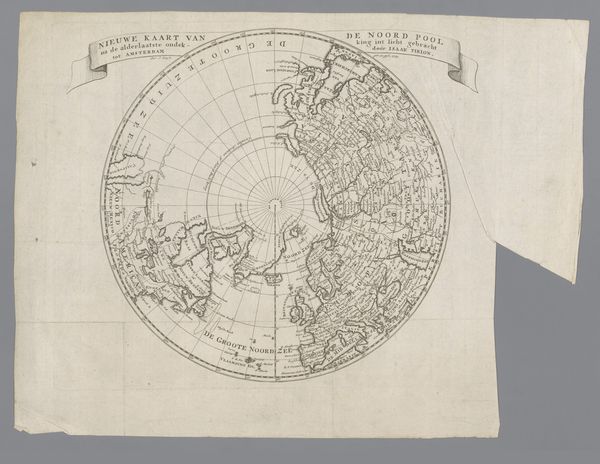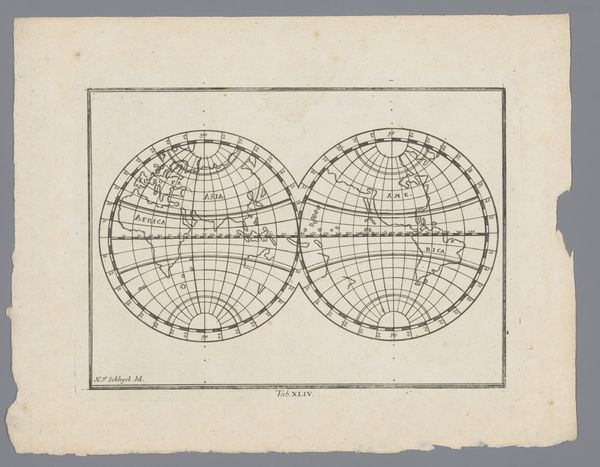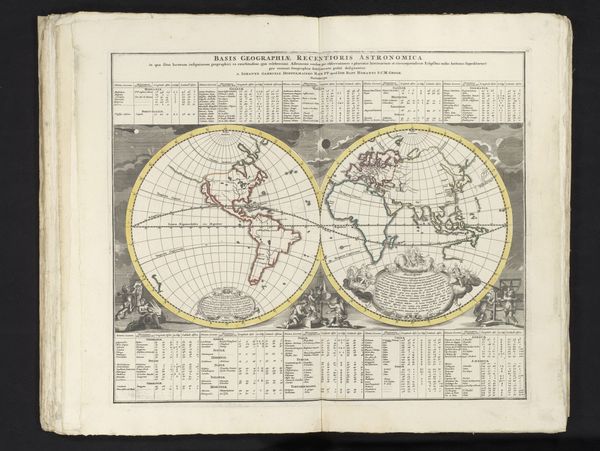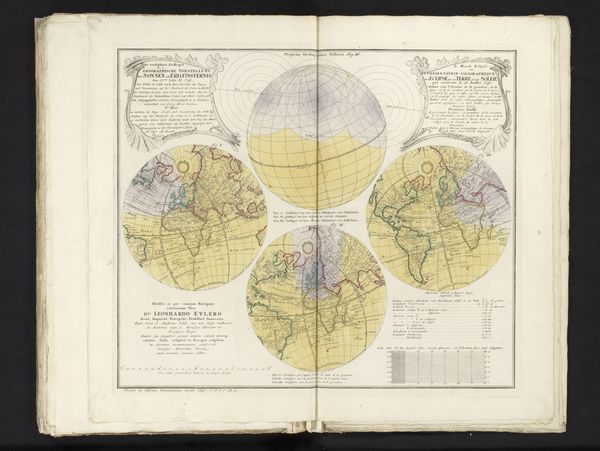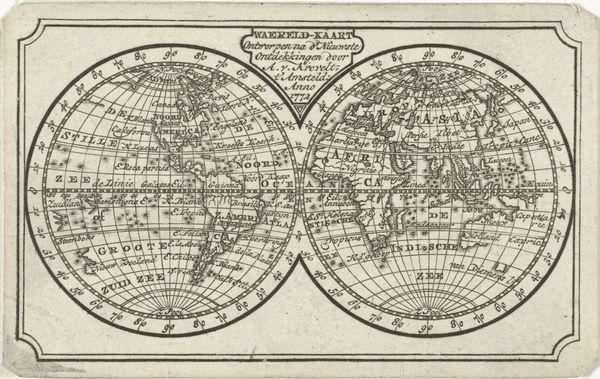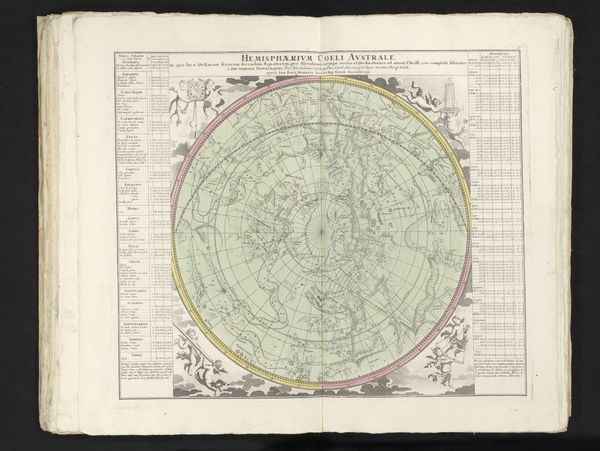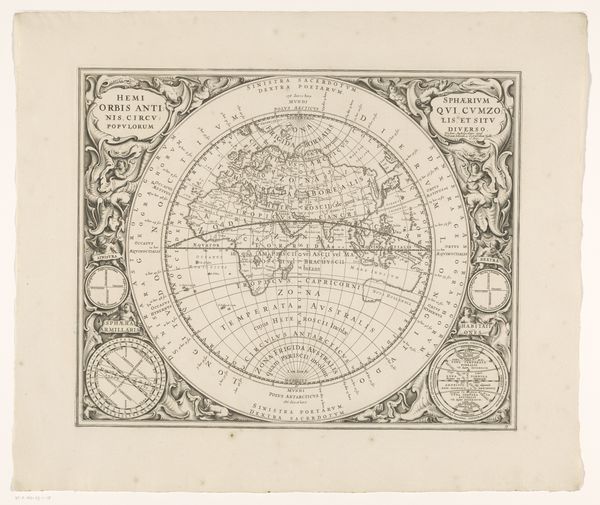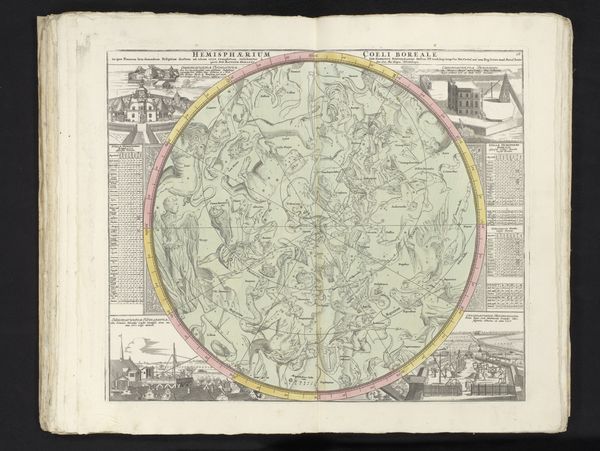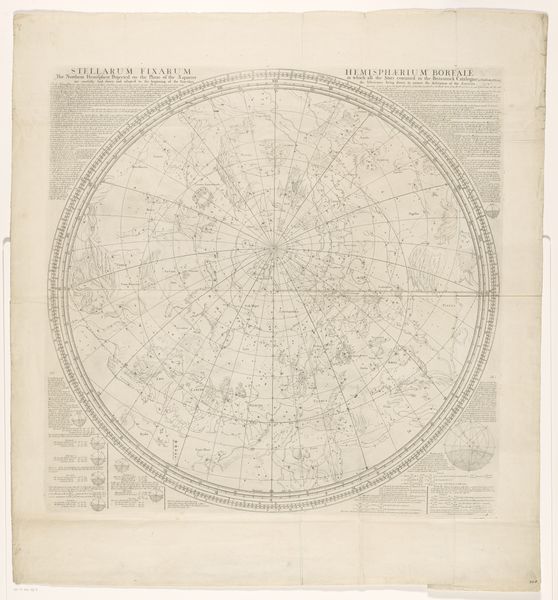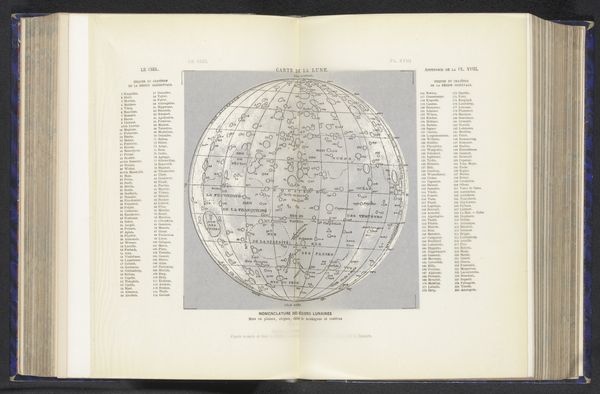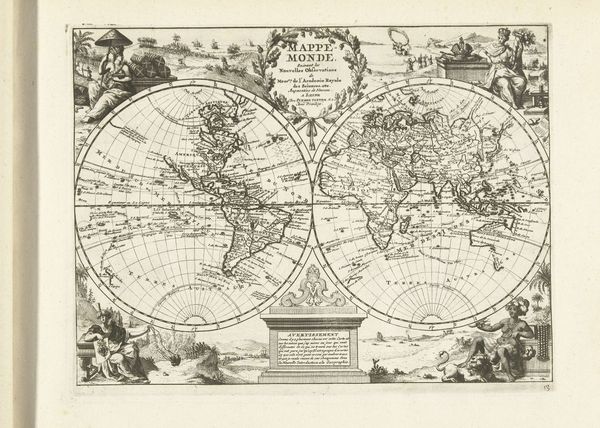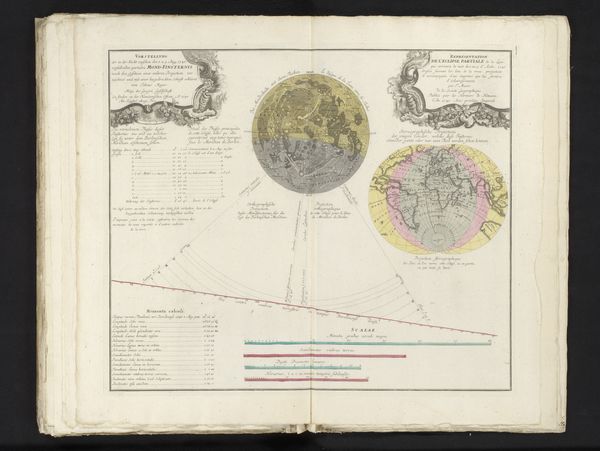
drawing, print, paper, engraving
#
drawing
# print
#
landscape
#
paper
#
geometric
#
history-painting
#
academic-art
#
engraving
Dimensions: height 263 mm, width 377 mm
Copyright: Rijks Museum: Open Domain
Curator: Let's explore this rather curious engraving and drawing from 1799 by Lambertus Nieuwenhuis, titled "Passage van Mercurius voor de zon." It commemorates the transit of Mercury across the face of the Sun as seen from Amsterdam. Editor: It's incredibly detailed, almost obsessively so. The stark geometric precision contrasts sharply with what I would imagine is a blazing celestial phenomenon. The radial lines emanating from the central circles evoke a scientific coldness rather than warmth of the sun. Curator: Precisely. The piece reflects the Enlightenment's drive to quantify and classify the natural world, placing human observation and reason at the forefront. These detailed engravings were not just scientific records; they served to validate scientific authority within society. The mapping of time and location is as much about claiming knowledge as it is about distributing it. Editor: Note how he maps not just the immediate transit but also plots it relative to the earth! From an artistic perspective, the use of line, the various thicknesses denoting different elements—it’s more schematic than scenic, an exercise in precision rather than painterly expression. Even the shadowing on the sun itself is purely representational rather than illusionistic. Curator: And let's consider the context of its production. In the late 18th century, institutions like the Felix Meritis society in Amsterdam were fostering scientific inquiry. Nieuwenhuis's work should be seen as contributing to the democratization of scientific knowledge through affordable, reproducible images accessible to a wider audience. The Age of Revolutions required some trust in what the institutions proposed and here it’s validated, I suspect, with a desire to connect common people to the grand cosmos. Editor: Yes, the seemingly objective style underscores that intended trust. By sacrificing any subjective interpretation, he appeals to the empirical spirit of the age. For me, what the work evokes is the shift from seeing the cosmos as unknowable wonderment to viewing it as another system ripe for mapping. I'm struck by its dual nature as both a technical diagram and a kind of… aesthetic object in itself, with stark symmetry and precise lines creating a visually interesting work independent of its content. Curator: That's a key tension within works like these; navigating objectivity with an intended trust from public validation. And on the whole, it brings our viewers to experience science meeting academic artistic demands of that period.
Comments
No comments
Be the first to comment and join the conversation on the ultimate creative platform.

